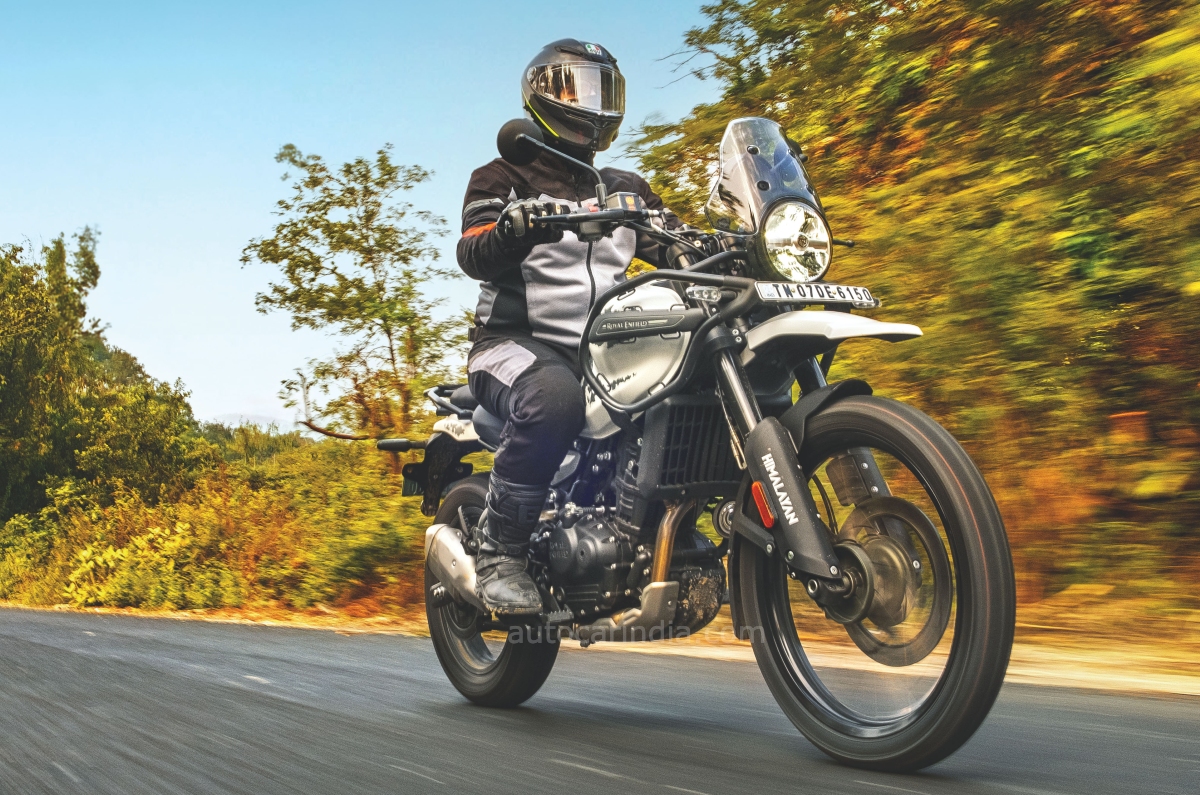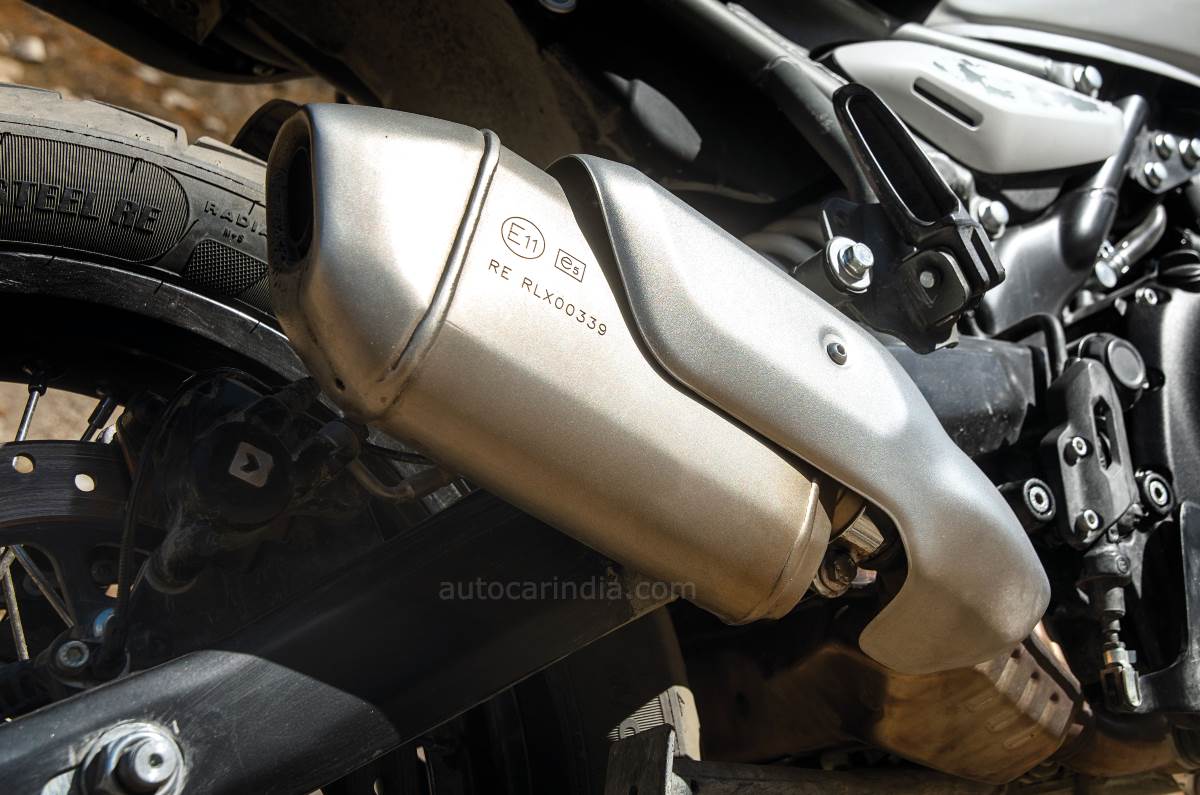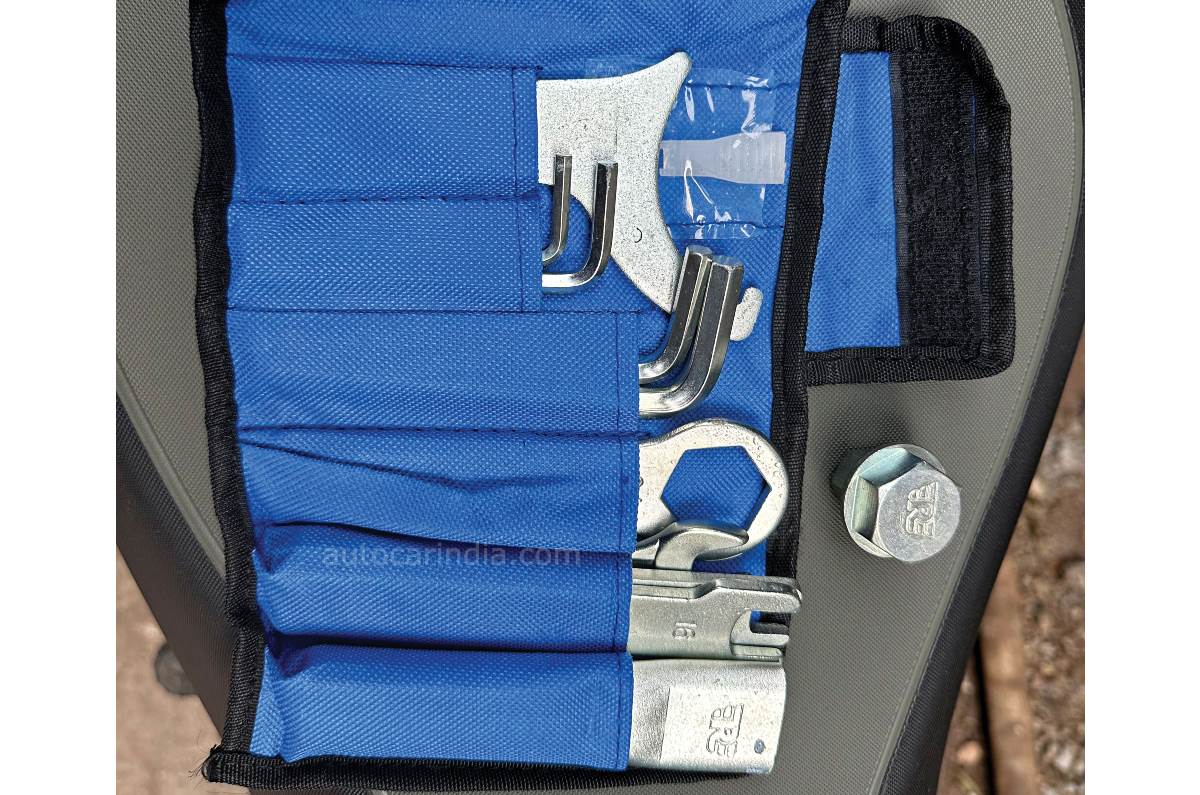
Last month, we wrote about riding the Himalayan 450 up in the mountains – it was a great experience and the bike proved to be immensely impressive in that environment. But a ride in the mountains is a rare luxury for most folks and that’s why a full road test of how the bike does in the drudgery of big city life was equally important.
This report comes after weeks and hundreds of kilometres of riding the bike in and around Mumbai and the overarching learning is that this is a big motorcycle with an impressive depth of capabilities. We’ve already talked about the Himalayan’s handling and off-road capabilities in detail, so this road test will focus on the more day-to-day riding experience.
A good place to start is the size of the bike. Everyone who has taken it for a spin at the office remarks on how it feels like a bigger bike than they expected and in that sense, it has lost some of the friendly appeal of the older Himalayan. On the bright side, the effort needed to turn the handlebar is quite low and that makes it easy to navigate through tight gaps in traffic without too much work. Low-speed balance and clutch feel are both very good as well. As for engine heat, you’ll feel some warmth on your right leg if you get stuck in a jam, but there are no blasts of hot air to be felt from the radiator fan.
I’ve been thoroughly enjoying my commute on the Himalayan thanks to the towering view over traffic as well as the potent combination of power and chassis capability. The bike can accelerate hard when you want it, but the strong brakes and grippy Ceat tyres mean it can also slow down with urgency when you need it. Best of all, the suspension and chassis composure can deal with nasty road conditions with complete ease. My commutes have never been this quick and it’s not because I’m going any faster than normal – you just don’t need to slow down for bad roads.

In our tests, the Himalayan was quicker than I expected, clocking a 0-100kph time of 6.35 seconds. That puts it surprisingly close to the KTM 390 Adventure and quicker than both the new Bajaj-Trumph 400s. More importantly, the flat bottom end below 3,000rpm that I complained about on the first ride is far less noticeable at sea level. There’s still not much performance below that, but it’s not really a problem here. The engine also feels quite flexible at low speeds and you can get around U-turns or over speed breakers in second gear.
As for vibrations, they’re mostly well controlled, but they creep in at the handlebar and foot pegs between 5,000rpm and 6,000rpm. On the highway, things are smooth up to 100kph in 6th, but then you feel the vibes clearly up to about 115kph, after which they start to smooth out again. It’s not a dealbreaker by any means, but I wish RE managed to smooth out this zone a little better. At the moment, 130kph feels smoother than 110kph and that’s a bit of a miss.

Still, highway touring is a strong point. The bike feels very planted and wind protection strikes a nice balance between keeping the blast off your chest but also letting some refreshing air through. The engine will pull all the way to 150kph and the bike can comfortably hold 120-130kph if you wish.
For a big bike with a 452cc engine, fuel efficiency is not bad either. Ridden carefully, you should get an overall figure of close to 30kpl, but even if you ride at a brisk pace, you’ll easily be able to extract 350km or more from the 17-litre tank.
Quality and reliability have both been good so far. The only quality-related thing, however, that annoys me is the joystick on the left side switchgear, which feels quite fiddly. On the plus side, the circular TFT is superb, both in terms of layout and readability.
The bike has performed flawlessly, with the only hiccup being that it sometimes refuses to change modes until you turn the ignition off and on again. Speaking of the modes, Eco cuts power by 20 percent in the first four gears, but the throttle response in Sport mode is so smooth I’ve never felt the need to use Eco.

A few other small things I have noticed are that the luggage rack now says 7kg weight allowance, compared to the 5kg that was on the initial test bikes. That being said, the rack feels solid and I’m sure a few more kilos won’t hurt. In fact, the Himalayan has multiple well-thought-out luggage mounting points.
I also like the fact that the mirrors seem to reduce some of the glare from headlamps at night. The tool kit is another well-thought-out thing and the ease with which ride seat height can be changed is something I like as well because I prefer the taller setting, but the bike is occasionally shared with shorter riders.
The old Himalayan was far from perfect, but it was a charming machine. The new version is vastly more capable, but it has lost some of that endearing quirkiness in the process. This is now a more polished, modern machine that is undoubtedly better than the one it replaces but at the cost of some character. This is the natural course of progression in the motorcycling world and you’ll see a similar story if you trace back the history of bikes like the BMW GS and Ducati Monster.
Nevertheless, while the new Himalayan may turn off some customers who liked what the old bike had to offer, it will undoubtedly attract a much bigger crowd who are drawn in by what the bike can do. This is just the sort of bike that ADV enthusiasts in India have been waiting for and it proves to be the most well-rounded bike in its category.



